




An Introduction to Capacitor Inductor Resistor
Our life is dependent on electricity from the moment we wake up until the moment we go to sleep at night. Electric current is necessary for the operation of everything from a simple bread toaster to a baking oven to a typical television. Mobile phones, the most popular gadget, use electricity to operate by charging the battery.
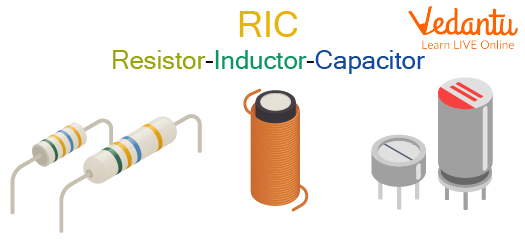
Introduction to Capacitor Inductor Resistor
We are aware that resistors, inductors, and capacitors are three significant passive components that are frequently employed in both electrical and electronic circuits. Capacitors, Inductor, and Resistors are the main components of most electrical and electronic circuits. You can learn more about these components by reading this article on capacitors, inductors, and resistors and knowing the differences between them.
At the end of this article, you will be able to answer questions like what is a resistor, what is an inductor, and capacitor definition.
What are Capacitor Inductor Resistors?
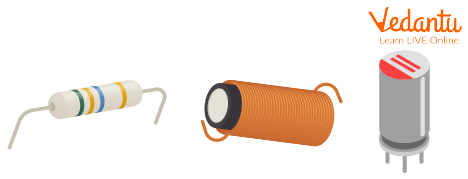
Capacitor Inductor Resistor
In electronic circuits, the capacitor, inductor, and resistor are the three fundamental components. Each of these has a significant impact on how an electronic circuit functions. They also use their units of measurement and standard symbols. Let us study these electronic components one by one in detail.
What is a Resistor?
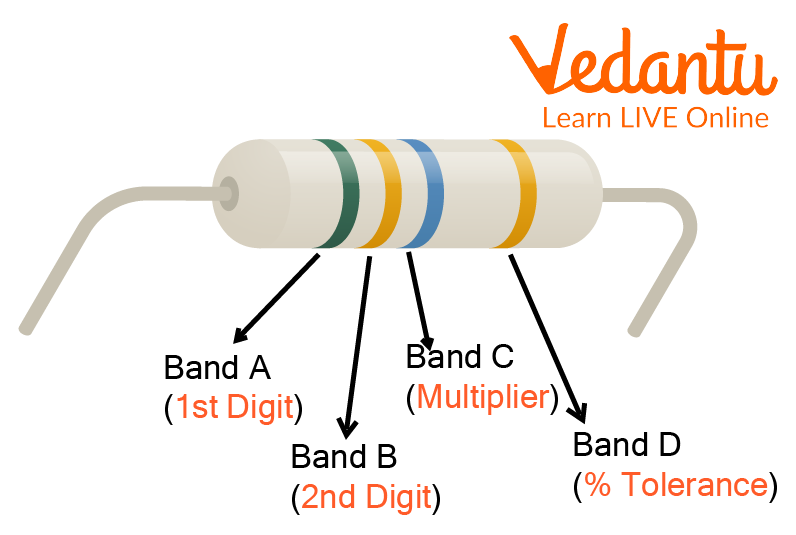
A Resistor
The amount of opposition offered to an electric current is measured as resistance. An electrical component used to offer opposition is known as a resistor. Depending on the need of resistance, there are various values of resistance available. With the help of resorts, we can prevent the damage that may cause to the device with heavy currents.
The less current flows through a resistor, the more excellent resistance it has. The resistance of the resistor is measured in terms of ohms and it is denoted by a greek letter omega $\left(\omega\right)$.
Ohm's law is used to determine the value of resistance which states that voltage divided by current equals resistance in ohms, i.e.,
$Resistance = \dfrac {Voltage}{Current}$
OR
$R =\dfrac { V}{I}
In an electric circuit, a resistor is symbolised by a zigzag line, and the letter "R" is used in the equations.
Uses of Resistor
There are numerous applications for resistors. Among some examples are voltage division, heat production, matching and loading circuits, gain control, and time constant setup.
Capacitor Definition
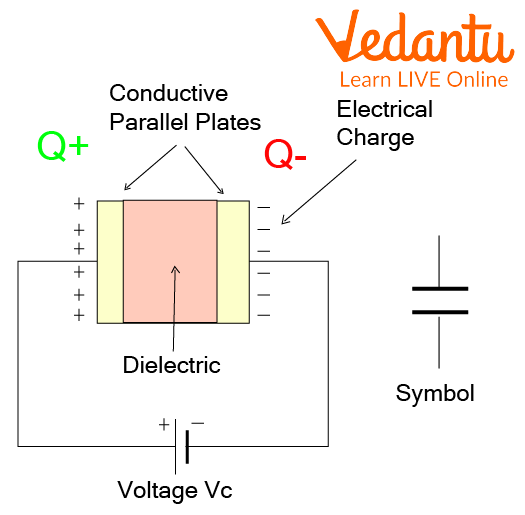
Capacitor Diagram
Similar to how water flows, electric charges move in an electric current. Charges can be stored in the same way that water can. The capacitor is the name of the electrical component that stores electric charges.
The capacitance of a capacitor, denoted by the abbreviation "C" and measured in "Farads," is its capacity to hold a charge. A capacitor can store more electric charge the more capacitance it has.
In an electric circuit, the two parallel plates serve as a representation of capacitors. We can learn from the capacitor diagram in the above image provided.
The capacitance of a capacitor is found by the formula:
Capacitance = Charge Stored/Voltage
or
C = q/V;
where
q = stored charge
V = Voltage of the capacitor
Uses of Capacitor
Following are the uses of capacitors:
DC blocking capacitors – These capacitors only allow AC to flow through specific circuit components while blocking DC.
The main components of filters are capacitors.
A section of the circuit can be connected to another using a capacitor.
What is an Inductor?
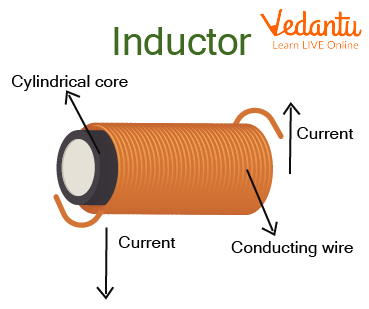
An Inductor
The amount of inductance in a circuit is represented by an inductor and it is denoted by letter L. The ability of a component to produce electromotive force as a result of a change in the flow of current is known as inductance. The wire is looped into a coil to create a straightforward inductor. To lessen or oppose changes in electric current, inductors are utilised in electronic circuits.
An inductor appears like a wire in a DC circuit. When the current is constant, it has no effect. Only when the current is changing, like in an AC circuit, does inductance have an impact. Henrys are used to measure inductance.
Uses of Inductor
Following are the uses of an inductor:
Inductors are used in tuning circuits.
Inductors are also found in sensors.
Induction motors
Transformers
In any AC circuit inductors are used in filters. The filters in AC circuits are used to separate the frequencies.
Chokes
Summary
Energy is stored in magnetic fields by inductors, released as heat by resistances, and stored in electric fields by capacitors. Resistors impede both alternating and continuous currents because resistance is constant. We can also say that they are the three fundamental building blocks of electronics. The components that resist the flow of electric current are called resistors. Inductors are made to turn electrical power into a magnetic field. We have discussed all the necessary points related to capacitors, inductors, and resistors.
FAQs on Capacitor Inductor Resistor
1. Why is a capacitor better than an inductor?
Inductors resist changes in the current while conducting while capacitors resist voltage changes and do not allow current to pass through them. Inductors and capacitors can be paired to filter out undesired signals or frequencies; capacitors are more effective at high frequencies and inductors at low frequencies.
2. Write some examples of resistors.
Following are some of the examples of resistors:
Street Lighting
Laptop and Mobile Chargers
Temperature Control
Fan Speed Controller
Measuring Electrical Current
Temperature Sensor
In-Circuit Functioning
Dividing Voltage
Heating Appliances and Lighting
LEDs & Transistors Protection
Timing Circuits
Lighting Circuits in Houses
Filter Circuits
3. Where is the capacitor used?
As a replacement for batteries as a means of energy storage, a capacitor can be used. Capacitors are typically used as energy storage components in systems when a sudden surge of power is required.









